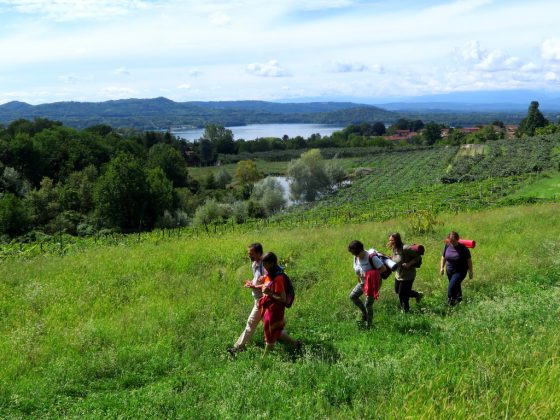Buon Cammino 1
Buon Cammino 1
Gps Track
Gps Track
- Start: Roppolo (BI) – Town Hall Square
- Arrival: Roppolo (BI) – Town Hall Square
- Total Length: 13,0 km
- Difficulty by Foot: Medium
- Signals: From the town hall square continue towards Via Al Castello, follow directions on the site
- Travel times: 3,5 Hrs
- Suggested time: All the year
- How to arrive: By car A4 motorway – exit Santhià Motorway A5 – exit Albiano By train Milan-Turin, stop Santhià Line Torino -Aosta stop Ivrea By bus Autolinea – Ivrea / Vercelli ATAP spa
- How to back: By car A4 motorway – exit Santhià Motorway A5 – exit Albiano By train Milan-Turin, stop Santhià Line Torino -Aosta stop Ivrea By bus Autolinea – Ivrea / Vercelli ATAP spa
Ring route that twists along the Serra S-E side: land rich of history and naturalistic assets.
We are along the moraine relief built by the huge Balteus glacier in the last million of years (Quaternary Period) and well known as Moraine Amphitheatre: it is the biggest one in Europe.
The area, already inhabited by mankind in the Neolithic before 3.000 a.c., preserves the rests of a Bronze Age village (Viverone Lake), included among the “Prehistoric Pile-dwelling Sites of Alps” (World Heritage of UNESCO). Along this walkway you will discover other evidences of that period: the ancient Cava di Purcarel and the Monte Orsetto.
More modern but as much fascinating the tracks of Celtic people settlements at Roc della Regina: an erratic rock excavated and worked by mankind.
Our trip continues through time and it coasts a part of the defensive system built by Longobards, the so called Chiuse, that allowed the inhabitants to defend themselves against the Francs.
If the ancient Roman Empire left evident tracks in the area of Bessa, the Middle Age shows other signs of mankind and history along the Francigena Route. It was a faith route that from Canterbury was leading the pilgrim to Rome.
Our way crosses it, discovering country oratories and churches that tell the nativity of the Christianity and the local communities efforts to testify for posterity.
Walks through woods, vineyards, cultivated fields, sail along the coast of ponds and admire a nature preserved for your own good and for the inhabitants’ one. Enjoy your walk! THE PROJECT “Agriculture and tourism at the gates of the Moraine Hills” is funded through a European call delivered by Piedmont Region for Actions of active labour policy for the achievement of public utility projects
